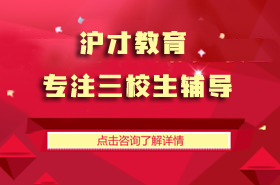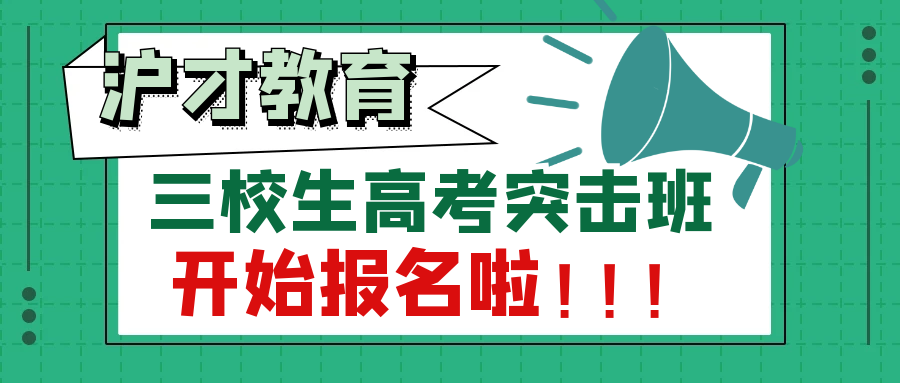计算机综合学业能力测试考试大纲
1 考试细则
1) 考题由4个部分操作题组成:操作系统、字处理软件(Word)、电子表格软件(Excel)和演示文稿软件(PPT)。
2) 考试采用网络环境,在计算机上以无纸化方式完成考试,考试时间为60分钟,试卷总分为100分。
3) 软件:Windows 10中文版、Office 2016中文版。
4) 参考教材:《办公软件高级应用》,中国铁道出版社,ISBN:978-7-113-28112-0
2 试卷分值分布
| 题目 | 分值 |
| 操作系统 | 10 |
| 字处理软件(Word) | 30 |
| 电子表格软件(Excel) | 30 |
| 演示文稿软件(PPT) | 30 |
| 合计:100 |
3 考试内容和要求
(1) 操作系统
| 知识点 | 范围 | 要求 |
| 文件系统 | Windows文件系统 | 掌握 |
| Linux文件系统 | 理解 | |
| Mac文件系统 | 理解 | |
| iOS与Android文件系统 | 理解 | |
| 文件资源管理器 | 文件资源管理器和库 | 理解 |
| 文件及文件夹的管理 | 掌握 | |
| 搜索和帮助 | 掌握 | |
| 应用程序管理 | 应用程序的安装 | 理解 |
| 应用程序的管理 | 理解 | |
| 系统设置 | 环境设置 | 理解 |
| 系统备份与恢复 | 理解 | |
| 打印设置 | 理解 | |
| 投影仪设置 | 理解 | |
| 快捷方式创建 | 掌握 | |
| 压缩和解压缩 | 掌握 |
(2) 字处理软件(Word)
| 知识点 | 范围 | 要求 |
| 排版设计技术 | 查找、替换和选择 | 掌握 |
| 格式刷、样式和模板 | 掌握 | |
| 字符格式 | 掌握 | |
| 段落格式 | 掌握 | |
| 页面布局 | 掌握 | |
| 封面、分页符 | 掌握 | |
| 表格 | 掌握 | |
| 图片、艺术字等 | 掌握 | |
| 页眉和页脚 | 掌握 | |
| 文本框 | 掌握 | |
| 日期和时间公式、符号和编号、音频和视频等 | 掌握 |
(3) 电子表格软件(Excel)
| 知识点 | 范围 | 要求 |
| 基本操作 | 单元格的编辑、格式化 | 掌握 |
| 条件格式 | 掌握 | |
| 公式与函数 | 公式、单元格引用 | 掌握 |
| 常用函数 | 掌握 | |
| 数据管理技术 | 排序 | 掌握 |
| 筛选 | 掌握 | |
| 分类汇总 | 掌握 | |
| 数据透视表 | 掌握 | |
| 图表 | 图表创建 | 掌握 |
| 图表编辑 | 掌握 |
(4) 演示文稿软件(PPT)
| 知识点 | 范围 | 要求 |
| 幻灯片设计 | 幻灯片的创建和格式化 | 掌握 |
| 超级链接与动作效果 | 掌握 | |
| 切换效果与设置 | 掌握 | |
| 动画效果与设置 | 掌握 | |
| 图片、形状、剪贴画、SmartArt | 掌握 | |
| 版式和配色 | 掌握 | |
| 演示文稿设计 | 布局(母版、节、放映) | 掌握 |
《英语听力》考试大纲
一、指导思想与目的
本考试是选拔性考试,大纲的制定是为了确保三校生招生英语听力考试的可信度与有效性,从而选拔优秀中等职业学校的毕业生入学。听力测试的目的是考查考生听懂并理解日常生活场合中所使用的英语,尤其是提取其中重要信息,用英语快速思维,根据语境进行综合分析、判断的能力。
二、应考对象
考试对象为符合2023年上海市教委相关文件规定的中等职业学校应届毕业生。
三、考试要求与内容
1.要求
能听懂语速为每分钟80-100个词的有关日常生活中所熟悉话题的简短独白、对话和短文。具体要求考生应能:
(1)理解主旨和要义;
(2)获取事实性的具体信息;
(3)对所听内容做出简单推理和判断;
(4)理解说话者的意图、观点和态度;
(5)运用基本的听力技巧。
2.内容
听力考试的内容在所学过的语言范围内,题材包括日常生活、学习、社交、文化等方面的对话以及句子结构比较简单、基本上没有生词的故事和短文听力材料。
四、考试题型、题量、分值、时间
1.题型:单项选择题。
2.题量与分值:50题,100分。
3.时间:60分钟。
五、试卷结构
《英语听力》考试分为三部分:应答、会话、短文听力理解。试题难易度:由易、中、难按5∶4∶1比例命题,即较容易的试题占50%,中等难度的试题占40%,较难的试题占10%。
(1)应答
要求考生熟练掌握日常交际语言功能,不但能听懂说话者是在什么情景下说的话,而且要对所听到的话选出最恰当的应答句。本部分有15题,考试题型为单项选择,每题2分,共30分。
(2)会话
要求考生能听懂英语国家人士关于日常生活和社会生活的长短不同的交流,理解大意,根据材料内容或背景信息,推测相关具体内容,如时间、地点、场合、身份、因果关系等要素。本部分共20题,每题2分,40分。
(3)短文
要求考生能听懂2~3篇难度一般、题材熟悉、情节不太复杂的故事、讲话或叙述等听力材料,以及1~2篇难度稍高的短文,理解大意,领会作者的态度和真实意图,并能根据听到的内容选择最佳答案。本部分考试题型为单项选择或是非题,共15题,每题2分,共30分。
试卷结构如下:
| 序号 | 项目名称 | 题数 | 计分 |
| Part I | 应答 | 15 | 30 |
| Part II | 会话 | 20 | 40 |
| Part III | 短文 | 15 | 30 |
| 合计 | 50 | 100 | |
Part I QUESTION-RESPONSE (30%)
Directions: In this part, you will hear fifteen sentences. After each sentence, there will be a pause. During the pause, you may read the three possible answers marked A, B, and C, and decide which is the best response to what you hear. Then mark the corresponding letter on the Answer Sheet with a single line through the center. It will be read twice.
Question 1: ________________________
A. B. C.
听力原文及参考答案:
How long have you got before your interview?
A. I’ll take you there.
B. Like three hours or so.
C. You can’t go in looking like this.
答案: B
Part II CONVERSATIONS (40%)
Section A Short Conversations(20%)
Directions: In this section, you will hear fifteen short conversations between two speakers. At the end of each conversation, a question will be asked about what was said. Both the conversation and the question will be spoken only once. After each question, there will be a pause. During the pause, you may read the four possible answers marked A, B, C, and D, and decide which is the best answer. Then mark the corresponding letter on the Answer Sheet with a single line through the center. It will be read once only.
11.A. He disliked his old flat. B. He hated the noise.
C. He wanted to give more parties. D. He wanted to have a dog.
听力原文及参考答案:
11. W: Mike, I heard that you had moved into a new flat. Didn’t you like your old one?
M: Yes, I did. But my neighbors hold parties very often and their dog makes much noise at night.
Q: Why did Mike move into a new flat? (B)
Section B Long Conversations(20%)
Directions: In this section, you will hear three long conversations between two speakers. At the end of each conversation, several questions will be asked about what was said. Both the conversation and the questions will be spoken only once. After each question, there will be a pause. During the pause, you may read the four possible answers marked A, B, C, and D, and decide which is the best answer. Then mark the corresponding letter on the Answer Sheet with a single line through the center. It will be read once only.
26. A. A recent driving test. B. An interesting concert.
C. Plans for the weekend. D. The music center in Washington.
27. A. She’ll go there by plane. B. She’ll go there in her car.
C. She’ll go there by train. D. She’ll go there in her friend’s car.
28. A. Mary is a very good musician. B. They both live in Washington.
C. Mary’s friend will give a performance in a concert.
D. Both Mary and her friend are interested in music.
听力原文及参考答案:
Conversation
M: Hi, Mary. Do you mind if I join you?W: No, not at all. Have a seat, Mike.
M: Do you have any plans for the weekend?
W: Yes. I’ll go to Washington and stay there for a couple of days.
M: Really? My roommate is going to Washington too. Are you driving?
W: No, I’m going to take a train. I’ve already bought my ticket.
M: What are you going to do in Washington?
W: I’ll visit an old friend of mine. She is a musician.
M: So you two will have a lot to talk about.
W: Yes. You know I like music too.
M: Sounds very interesting.
W: We are going to hear a concert at a music center in Washington.
M: Wow, have a nice trip.
W: Thank you.
Q26. What are the two speakers mainly talking about? (C)
Q27. How will Mary go to Washington? (C)
Q28. What can we learn from the conversation? (D)
Part III PASSAGES (30%)
Directions: In this section, you will hear three short passages. At the end of each passage, you will hear some questions. The first two passages and the questions will be spoken only once. After you hear one question, you can choose the best answer from the four choices marked A, B, C and D. Then mark the corresponding letter on the Answer Sheet with a single line through the center. It will be read twice.
46. A. $10. B. $15. C. $40. D. $50.
47. A. Every day. B. Every month. C. On weekdays. D. At weekends.
48. A. Flowers, chocolates, boxes, CDs. B. Books, CDs, chocolates, etc.
C. Flowers, books, chocolates, DVDs. D. Books, flowers, sweets, records.
49. A. She hates doing housework. B. She has a lot of homework to do.
C. She wants more time for TV or with her friends.
D. Her parents give five dollars less for her pocket money.
50. A. Sometimes she saves up some money to buy something expensive.
B. She takes out the rubbish and cleans the yard around the house.
C. She must use her pocket money to buy food and clothes.
D. If you work hard, you will get something rewarding.
听力原文及参考答案:
Every month Catherine receives 50 dollars from her parents. It is not given to her as a present but as pocket money. Catherine must do something for her family to earn the pocket money. On weekdays, she helps her mother with cooking after school and washes the dishes after dinner. At weekends, she takes out the rubbish and cleans the yard around the house. She doesn’t have to pay for her food and clothes with the money she has earned. She can use the money to buy something that she likes, such as books, flowers, chocolates and CDs. If the thing she wants is expensive, she will save up for it. If she doesn’t work because she forgets it or wants to be lazy one day, her parents will take away five dollars from her monthly pocket money. In order to earn the money every month, Catherine has to keep on helping her mother with the housework every day. Sometimes she really wants to give up because she would like to spend more time watching TV and DVDs or playing games with her friends. But if she does, she will not earn any money to buy what she likes. Gradually, she understands what “No pain, no gain” means.
46. How much pocket money does Catherine get from her parents every month? (D)
47. How often should Catherine do something for her family to earn the money? (A)
48. What does Catherine like to buy with her pocket money? (B)
49. Why does Catherine sometimes want to stop doing housework? (C)
50. Which of the following statements is not true? (C)






